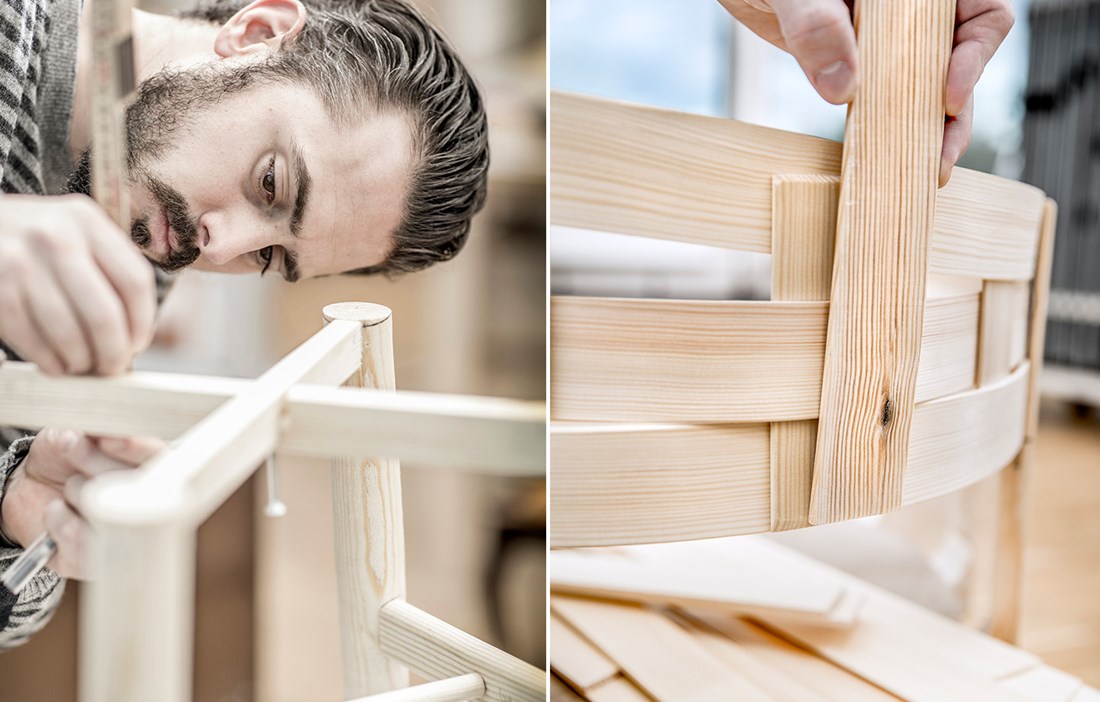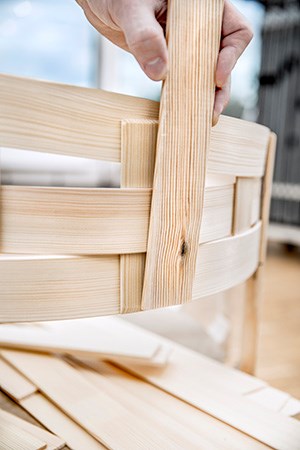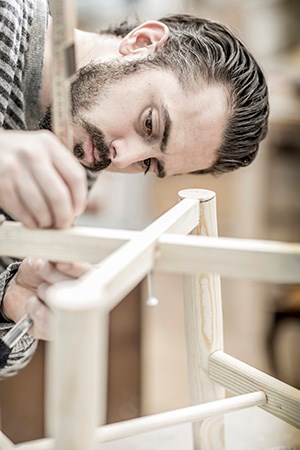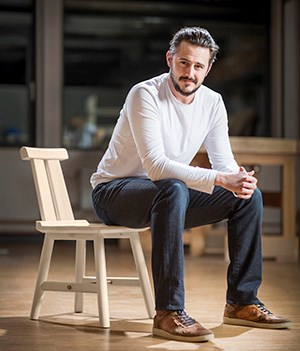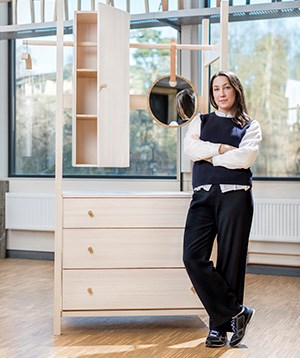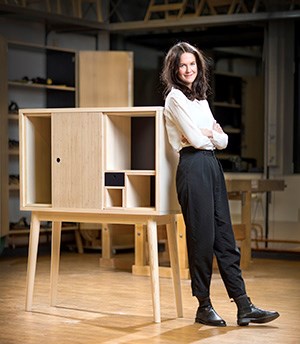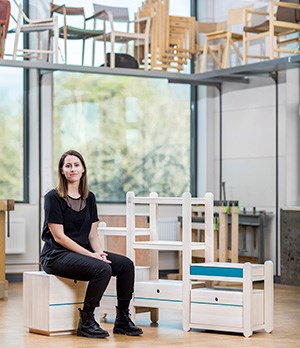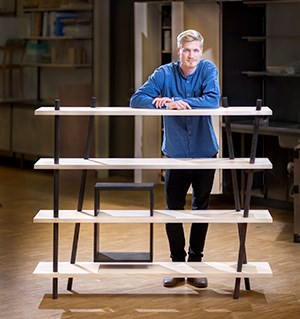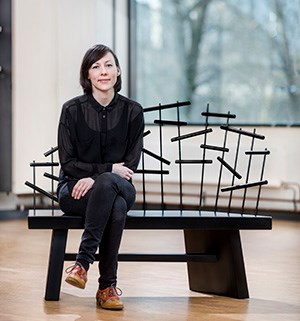#DesigninPine is a unique collaborative project between the industry body Swedish Wood, Malmstens, which is part of Linköping University, and two Chinese furniture manufacturers.
The exhibition #DesigninPine will be launched on Tuesday 7 February at 11:30 am on the Malmstens stand VH01:46 in the Greenhouse. The students will be available for interviews along with representatives from Malmstens and Swedish Wood. A VIP gathering of the exhibition will take place on Friday 10 February at 10:30 am. In addition to the students and representatives from Swedish Wood and Malmstens, both of the Chinese furniture manufacturers will be on hand for interviews. China’s Ambassador to Sweden Chen Yuming will also be attending the VIP gathering.
In China there is growing interest in climate- and eco-aware design with a Scandinavian touch. The country also has a growing middle class with disposable income and a positive attitude towards furnishing their homes with wood.
“As well as raising the profile of Swedish coniferous wood in China and other export markets, #DesigninPine showcases pine’s potential in contemporary design. What’s more, Swedish wood is a renewable material sourced from sustainable forestry, which chimes perfectly with the growing eco-awareness that we’re seeing in society today,” comments Charlotte Dedye Apelgren, Director of Interior and Design at Swedish Wood.
Many of the students have drawn their inspiration from the natural beauty of Sweden. Mikel Blomgren brings the warmth of the forest indoors with his Cone design and, just like in Elin Eliasson’s Ottis storage system, a little pine cone plays the lead role. With his Delilah chair, Nicholas James Soubiea evolves the Swedish Windsor chair tradition, while Hemmo Honkonen’s Thaw shelving system echoes the melting snow of early spring. Maja Björnsdotter’s bedside table The Crane embraces what in Asia is a symbol of long life and immortality.
#DesigninPine has given the students an intimate knowledge of pine as a material and new insights into how it can be used in large-scale industrial furniture manufacture.
“The students at Malmstens work on both fictitious and real assignments all the time, but this collaboration has been particularly exciting. We’ve discovered that distance is no obstacle where defined concepts have been shattered and that pine as a material is changing. The result is a superb example of a successful collaboration with many parties. Alongside the manufacturers, Swedish Wood has also imparted a great deal of knowledge about pine,” says Chandra Ahlsell, lecturer at Malmstens.
The furniture project #DesigninPine will be displayed on the Malmstens stand VH01:46 in the Greenhouse during the Stockholm Furniture & Light Fair, 7-11 February 2017.
The Malmstens students and their furniture
With her bedside table The Crane, Maja Björnsdotter has taken the long-legged bird and tried to depict a little of the symbolism associated with it. The feathers are echoed on the outside of the table, which is clad in pine shavings to give a light and airy impression.
With his Delilah chair, Nicholas James Soubiea has taken the Swedish Windsor chair tradition and interpreted it in his own way. Much of his work has focused on simplifying the design language of the classic Windsor chair and distilling it into a clear and simple design.
The idea behind Solith af Malmborg’s open wardrobe solution Display is that the owner can customise the appearance and function. The hanging cupboard that you can thread onto the wardrobe rail is one example, as are the mirror and hinges.
Mikael Blomgren’s Cone furniture is an interpretation of the forest’s gravitas; the beauty, the tranquillity and the mystique, reflected in the form and detail. The pine cone sitting in the moss is reflected in the shape of the handles, imbuing the room with the warmth of the forest.
Mari Koppanen’s Golden Shelving System is a storage cupboard based on the golden ratio – the harmonious proportions that occur so often in life. The internal modules can be stacked on and in each other and used both in and outside the actual cupboard carcass.
While the design has a Nordic feel, Johannes Lif has consciously tailored his Braided Chair to Chinese users, who tend to prefer lower and wider furniture. The woven back, inspired by traditional Swedish basketweaving, showcases the versatility of pine as a light, strong and flexible material.
A little fairytale figure in the form of a pine cone gave its name to Elin Eliasson’s storage system – Ottis. The system comprises legs of different heights, frames and boxes, which can be used to create a whole collection of furniture.
Scandinavian nature inspired Hemmo Honkonen in his work on the shelving system Thaw, which is intended for both public and private environments. The system’s various components can readily be developed into a larger family, with each unit having a different application.
In her sculptural seating Zájì, Fie Amonsen has worked graphically on the interplay between heavy and light. The back’s floating spindles are inspired by the shape and movement of a mobile, firing the observer’s imagination. The furniture changes its look depending on where in the room one stands.
About the project
#DesigninPine is a unique collaborative project between the industry body Swedish Wood, Carl Malmsten Furniture Studies (Malmstens), which is part of Linköping University, and two Chinese furniture manufacturers.
Over a few intense weeks in autumn 2016, the third-year students in furniture design at Malmstens worked to design furniture for the Chinese market, based on Swedish pine. The project has also involved the Chinese furniture companies Huari Furniture and Fujian Dushi Homelife Group. They provided knowledge of the young Chinese target group and the market and about industrial furniture manufacture, as well as producing the prototypes.
The drive behind the project Design in Pine is to export Swedish design in order to support the export of Swedish sawn wood products. Over the past few years, Swedish Wood has worked actively to develop new export markets for Swedish sawn wood products, having identified China as a highly interesting growth market. 2013 saw Sweden export 400,000 cubic metres of sawn wood products to China, three times more than in the previous year. In 2016 exports from Sweden to China set a new record at around 800,000 cubic metres.
More information about the DesigninPine project
- Project site #DesigninPine
- #DesigninPine on Instagram
Contacts:
Charlotte Dedye Apelgren, Director of Interior and Design, Swedish Wood
Tel +46 70 661 78 81
charlotte.apelgren@swedishwood.com
Chandra Ahlsell, Lecturer, Carl Malmsten Furniture Studies, Linköping University
Tel +46 073 941 10 12
chandra.ahlsell@liu.se
Press contact:
Camilla Carlsson, Communications Manager, Swedish Wood
Tel +46 72 702 79 65
camilla.carlsson@swedishwood.com
Maria Leijonhielm, Administrator, Carl Malmsten Furniture Studies, Linköping University
Tel +46 73 414 10 06
maria.leijonhielm@liu.se
Swedish Wood works to promote knowledge, inspiration and development in the field of wood, wood products and wood construction. The aim is to increase the use of wood in Sweden and in selected markets abroad through information and inspiration. Swedish Wood also focuses on raising the profile of wood as a competitive, ecofriendly and sustainable material. Swedish Wood is supported by the Swedish sawmill and glulam industry. Swedish Wood operates under the auspices of The Swedish Forest Industries Federation.
Carl Malmsten Furniture Studies, commonly known as Malmstens, offers four undergraduate programmes: in Furniture Design, Cabinetmaking, Furniture Upholstery and Furniture Conservation. The learning environment maintains an openness between the programmes. The students’ opportunities to collaborate and seek out new solutions ensure a holistic approach and a good understanding of the various aspects of furniture and professional roles. The students have unique opportunities to develop their craft, art and intellect. There is a shared focus on furniture and wood, based on concepts such as material knowledge, quality and sustainability. Factors that in the long term may influence – and in the best case improve – people’s everyday lives.
Malmstens has been part of Linköping University since 2000 and is located on Lidingö.

